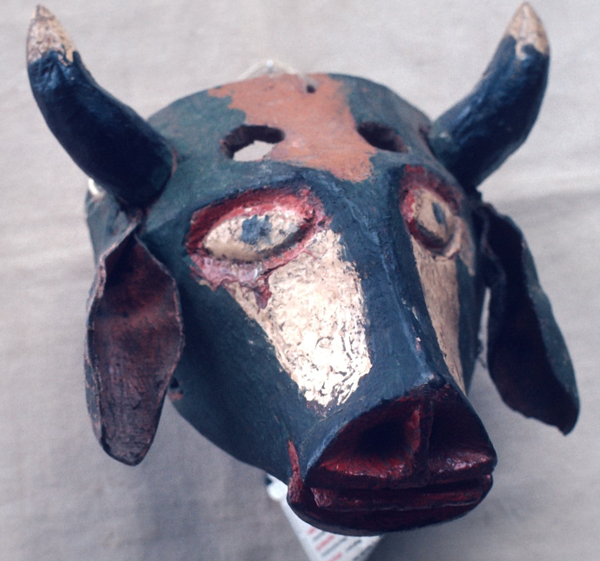Today we will look at some more masks from the Urmston collection—Torito (Bull) masks from the area of Alta Lucero, Veracruz. Apparently this is a very popular category, as every one of these masks has already been sold. I apologize for the quality of these images, as some of the masks are not well illuminated and at least one is not well focused. These are scans from slides that were taken 35 years ago; it is far easier now to obtain sharp and well lit images with digital cameras.
Dancers wearing Torito masks dance in Alta Lucero during Carnaval (Carnival or Mardi Gras). The first is nicely carved and has a typical design.
According to a website about Alta Lucero, dancers wearing bull masks perform in “Las Danzas de Negros (Negreada),” but there is little further explanation.
http://www.altolucero.gob.mx/municipio/costumbres-y-tradiciones/fiestas-culturales/

